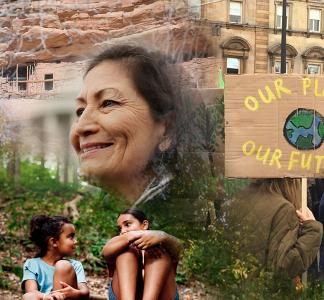From Bears Ears to the Red Road: 7 promising advancements for Indigenous-led conservation
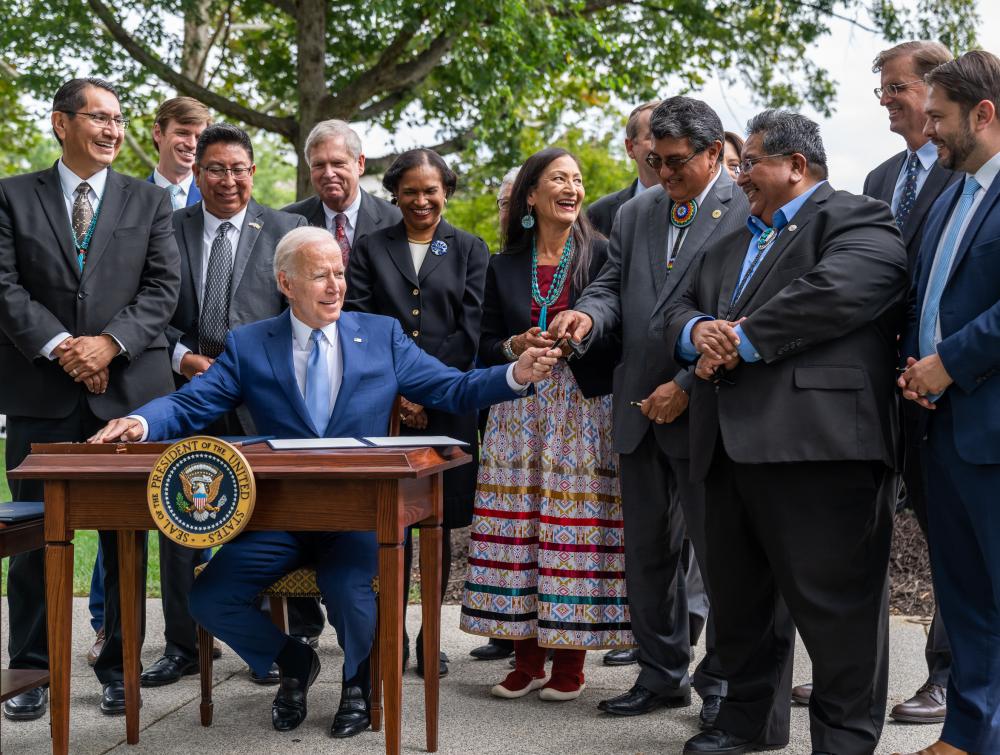
Surrounded by Tribal leaders, Biden signs proclamations to restore protections for Bears Ears, Grand Staircase-Escalante National Monuments and Northeast Canyons and Seamounts Marine National Monument
The White House, flickr
2021 marked by progress on Tribal sovereignty, honoring treaties
From the ban on new oil and gas leasing around Chaco Canyon to restored protections for Bears Ears National Monument, 2021 has been marked by conservation wins that would not have been possible without the unwavering advocacy of Tribal leaders and Indigenous activists.
Below, we’re taking a look at Indigenous-led conservation victories of 2021, as well as overdue events and policies that aim to honor Tribal treaty rights and advance Indigenous priorities.
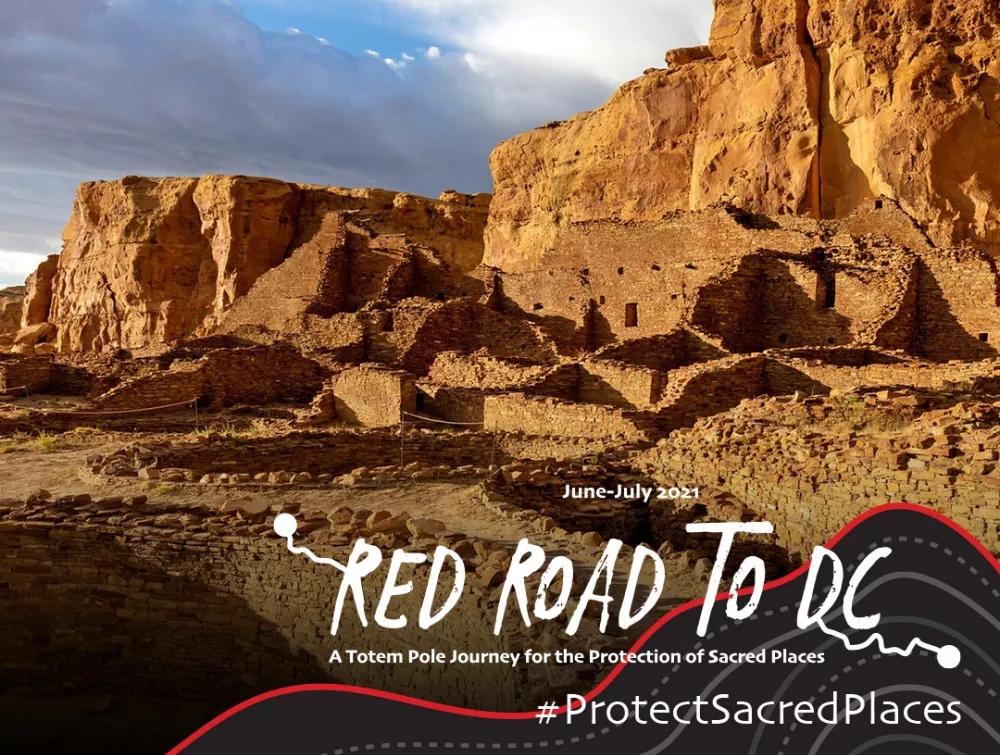
Red Road to DC
1. “Red Road to DC” message: Protect Indigenous sacred sites
In 2013, in response to the proposal of a 50 million-ton coal export terminal on their traditional and sacred lands, members of the Lummi Nation began what would become a yearly totem pole journey. This summer, on the Red Road to DC, the House of Tears Carvers of the Lummi Nation created and transported the largest totem pole yet with a clear message: protect Indigenous sacred sites now. Along the way, the totem pole stopped at sacred and culturally significant landscapes under threat from climate change and development, connecting, empowering and honoring communities on the frontlines of the environmental and extinction crises.
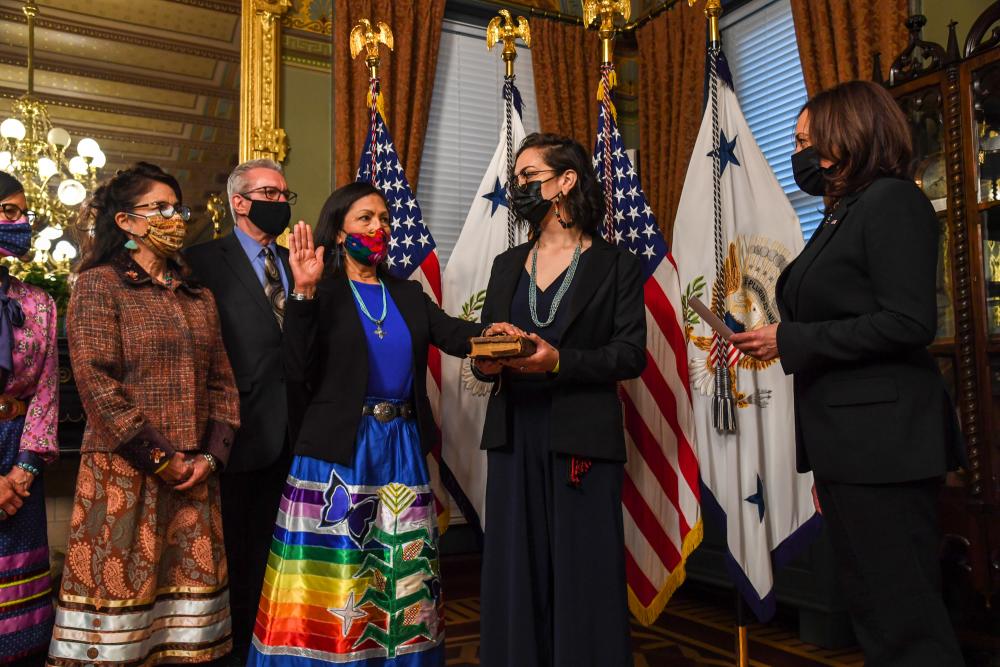
Deb Haaland being sworn in as the 54th Secretary of the Interior
U.S. Department of the Interior, flickr
2. Sec. Deb Haaland and Raina Thiele appointed to lead at Department of Interior
This year, Secretary Deb Haaland made history as the first Native American to serve as a Cabinet secretary. Her confirmation as Secretary of the Department of the Interior was all the more significant because the agency once oversaw the violent dispossession of lands from Indigenous peoples, and much work remains to establish a respectful relationship between it and Tribal communities. Since her confirmation, Sec. Haaland, a member of the Pueblo of Laguna, has pledged to “make sure Tribal leaders - and all marginalized communities - have a seat at the table.”
In April, Sec. Haaland took steps to follow through on that promise, by naming Raina Thiele (Dena’ina Athabascan, Yup’ik and an enrolled member of Pedro Bay village), as her top official on Alaska issues. As the agency’s senior advisor for Alaska affairs and strategic priorities, Thiele is tasked with leading all Interior issues in the state.
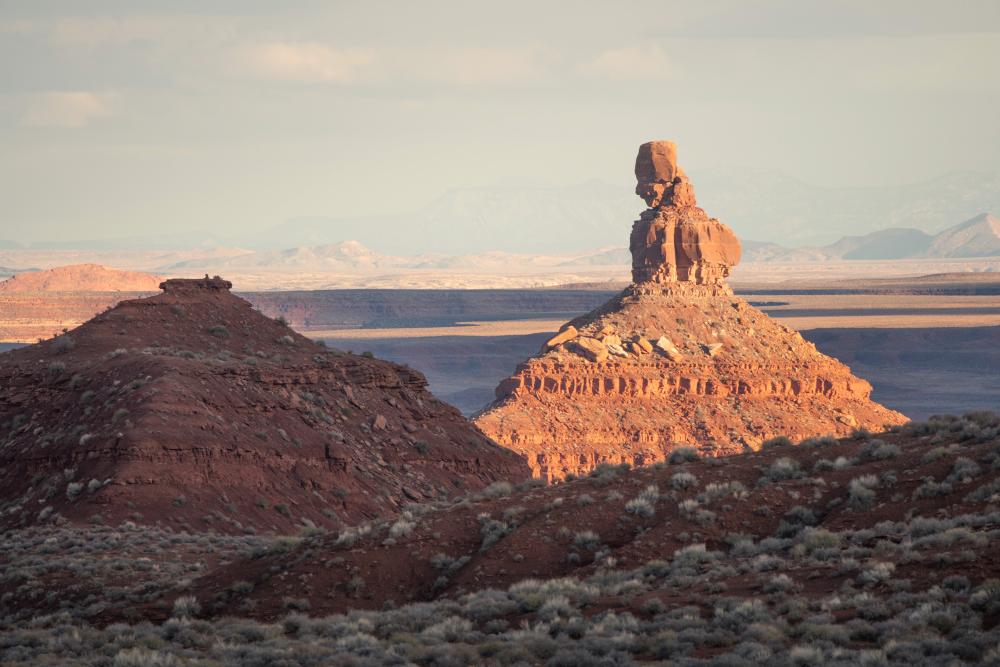
Bears Ears National Monument, Utah
Mason Cummings
3. Restored protections for Bears Ears National Monument
In October, after nearly four years of unabating advocacy by the Bears Ears Inter-Tribal Coalition, made up of leaders from Navajo Nation and the Hopi, Ute Indian, Ute Mountain Ute and Zuni Tribes, President Biden delivered on his promise to restore the boundaries of Bears Ears National Monument. Thanks to the work of Indigenous leaders and others, the cultural and ancestral connections that multiple Tribes have to this landscape have been recognized, and Bears Ears is now protected from immediate threats.
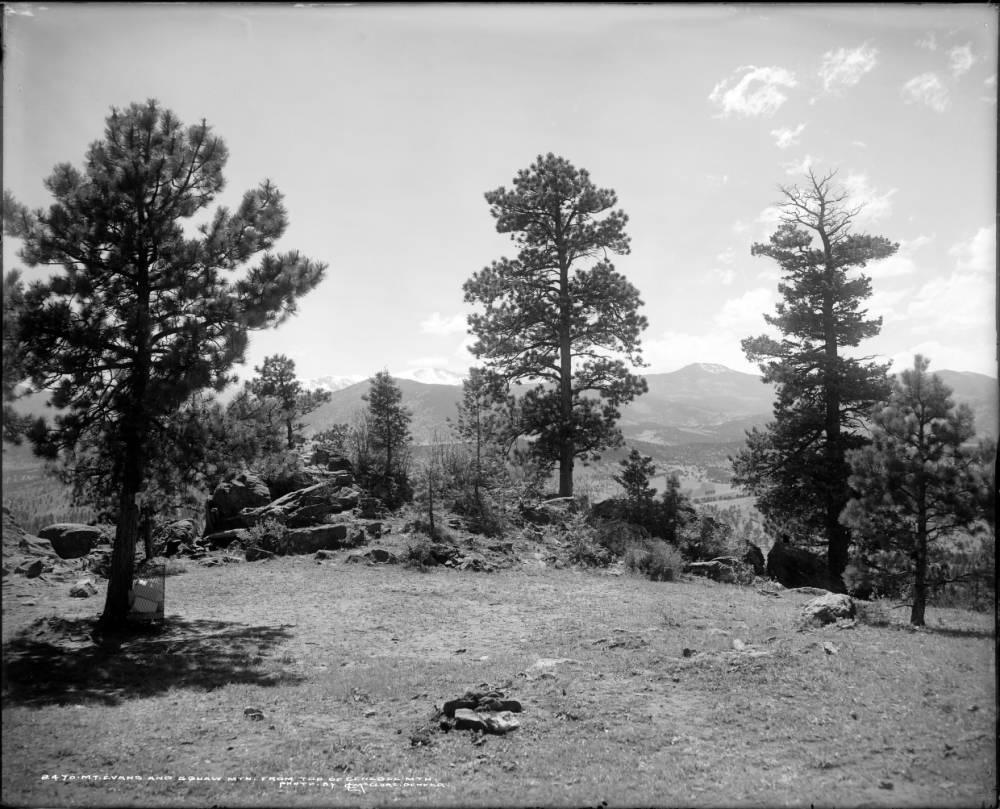
Once named with an anti-Indigenous slur, this Colorado peak has been renamed to Mestaa’ėhehe Mountain
Denver Public Library
4. Sec. Haaland takes steps to eliminate racist and offensive names nationwide
Currently, the names of over 650 mountains, rivers and other geographic features on public lands contain a deeply offensive slur against Indigenous women. This year, Secretary Haaland made plans to address this by issuing two orders that aim to review and potentially eliminate racist and offensive place names on public lands.
The first of these orders will replace the names of geographic features containing the anti-Indigenous slur, while the second will create an advisory board to more broadly review and potentially replace racist and offensive names on public lands. Sec. Haaland’s orders serve as an important step toward acknowledging the historic and ongoing injustices perpetrated against Indigenous peoples and ensuring that everyone feels welcome on public lands.
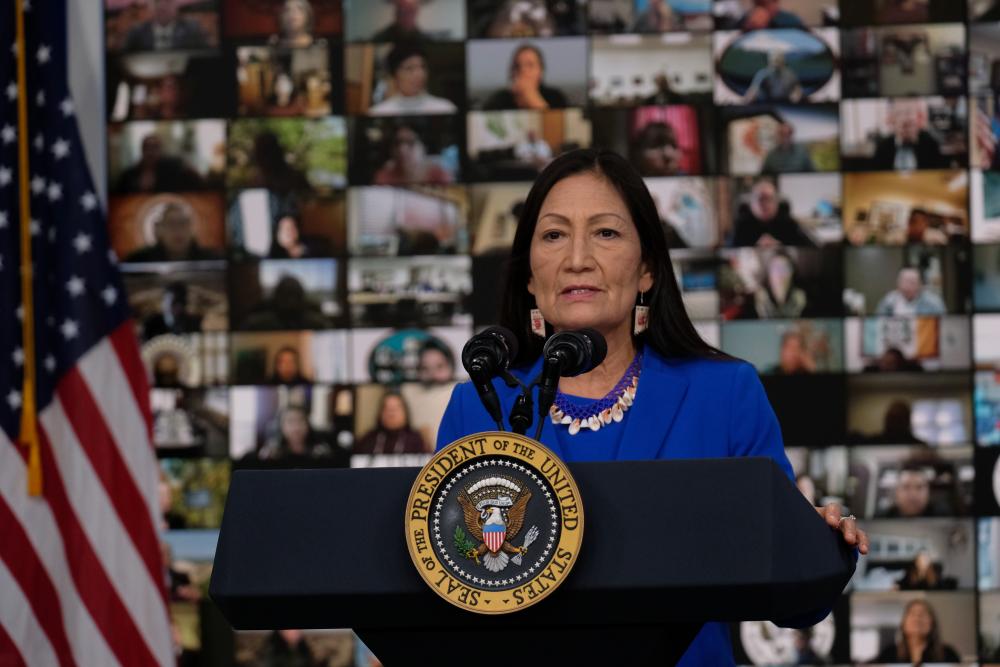
Secretary of the Interior Deb Haaland speaks at White House Tribal Nations Summit
US Department of the Interior, flickr
5. Biden administration takes multiple actions to honor treaty rights and advance Indigenous priorities
For the first time in more than five years, Tribal leaders from over 500 Tribes gathered virtually for the first White House Tribal Nations Summit. While reactions to the summit varied, the event resulted in a number of policies aimed at respecting Indigenous sovereignty and honoring Tribal treaty rights.
The Biden administration announced three separate agreements and orders committing federal agencies to protect Tribal treaty rights in their work; increase access to Indigenous sacred sites and incorporate Traditional Ecological Knowledge into public land management; and strengthen the role that Tribal communities play in decisions regarding public lands and waters. These actions build upon a commitment that the Biden administration made earlier in the year to fulfill treaty responsibilities to Tribal nations and engage in regular and meaningful consultation with Tribes.
While these agreements and policies are steps in the right direction, it is critical that they result in meaningful consultation rooted in consent. Judith LeBlanc (Caddo), Executive Director of Native Organizers Alliance, stated that “it is not enough to check a box to ‘consult’ with Tribes with projects like dams, mines and oil pipelines… it is crucial that [policies] support true Tribal consultation that is based in free and prior consent.”
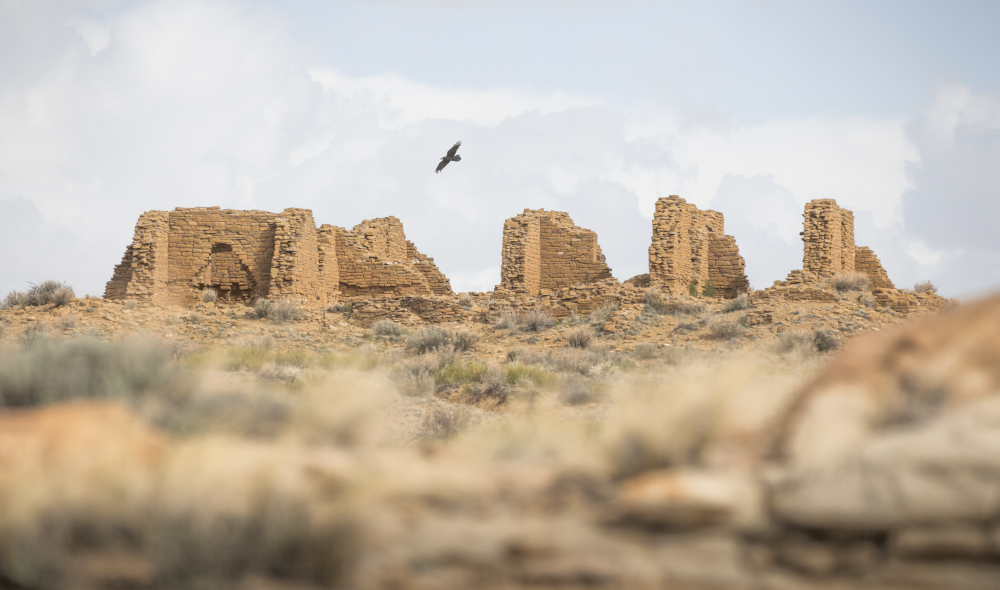
Chaco Culture National Historic Park, New Mexico
Mason Cummings
6. Ban on new oil and gas leasing around Chaco Canyon
Despite Chaco Canyon’s cultural significance to many Pueblo, Hopi and Navajo people in New Mexico, it has been increasingly encroached by oil and gas development. This year, President Biden announced a 20-year ban on new oil and gas leasing and development within 10 miles of Chaco Canyon. This decision was in direct response to ongoing Indigenous-led advocacy to protect sacred and culturally significant sites across the country. The next step is for Congress to permanently protect the Greater Chaco Region from oil and gas development.
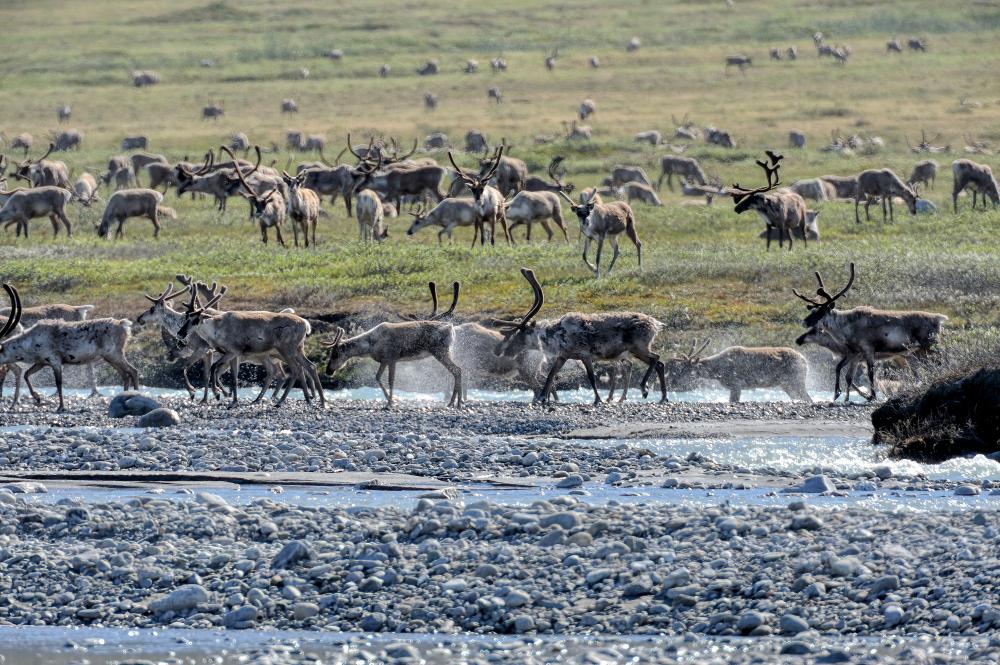
Arctic National Wildlife Refuge, Alaska
Edward Bennett/Bennett Images LLC
7. Biden temporarily suspends oil and gas drilling in Arctic Refuge
In 2017, Congress opened the Arctic National Wildlife Refuge to oil and gas drilling. This action not only exposed the land and wildlife to the threats of fossil fuel development, but also compromised the sacred calving grounds of the Porcupine Caribou Herd on which Gwich’in and Iñupiat people depend to feed their communities and sustain their cultures. Following years of advocacy and leadership from Gwich’in and Iñupiat advocates, the Biden administration temporarily suspended the oil and gas leasing program for review. We look forward to the permanent ban of oil and gas development in this sacred place.
Looking ahead to 2022
As 2021 comes to a close, we celebrate these significant advancements. We also recognize that there is much more work to be done toward honoring Tribal treaty rights; engaging in true and meaningful Tribal consultation; acknowledging the historic and ongoing injustices perpetrated against Indigenous peoples; and advancing Indigenous conservation priorities.
In 2022, we hope to see the Biden administration support Indigenous-led conservation efforts by affording more permanent protections for sacred and culturally significant landscapes such as the Arctic National Wildlife Refuge, Great Bend of the Gila, Boundary Waters Canoe Area Wilderness and Avi Kwa Ame. We also look forward to seeing the administration engage in consent-based and meaningful consultation with Indigenous leaders around land and water protection and management.
